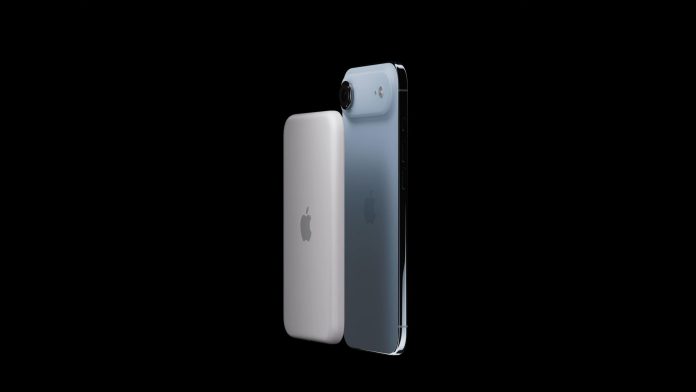On Tuesday, Apple unveiled the iPhone 17 series, headlined by the ultra-thin iPhone 17 Air, the company’s slimmest iPhone yet. Globally, much of the conversation is about the iPhone 17’s slimmer design, titanium frame, and on-device AI. But in Africa, the real question is whether this sleek new lineup resonates with consumers who balance interest in innovation with the realities of cost.
To find answers, TechCabal spoke with seven (7) users and experts in South Africa, Nigeria, and Kenya.
South Africa: “These features matter here too”
In South Africa, pre-orders open September 12, with in-store sales beginning a week later. iStore, Apple’s local retailer, is teasing the lineup with trade-in deals and financing options to cushion prices expected well above U.S. retail.
For John Arufandika, a digital transformation strategist at Aptiva AI—an agency specializing in language models, system upgrades, and AI compliance—the iPhone 17 isn’t just a luxury device. To him, its true relevance for Africa lies in how it represents technology convergence.
“I see Apple doubling down on on-device AI, advanced chipsets, satellite-enabled connectivity, and energy-efficient design,” he said. “ These are not just consumer perks; they point to the direction of computing over the next decade.”
Arufandika argues that features like offline AI and satellite access could be transformative in Africa, where cloud costs are high and connectivity is patchy.
“Tools that can run offline, protect data sovereignty, and stretch battery life in areas with weak grids, these are precisely the kinds of innovations Africa needs at scale.”
Still, he admits that affordability remains the barrier. The real challenge, he says, is bridging the gap between high-end demonstrations and mass-market reality.
On the consumer side, the excitement is real, but so is the price shock. Tendai Mugabe, Director of Programs and Impact at the Africa Women in Finance Inclusion Initiative (AWFII), captures the tension with humor and honesty.
“I am an Apple sheep, and I am already in love and want it. But to try to justify that amount and then fees, life and all, it is pricey.”
Mugabe, who upgrades every two years, says she is due for a new device but admits the cost concerns.
Nigeria: Prestige versus practicality
In Nigeria, reactions are split between admiration and scepticism. Lagos-based developer Tesleem Amuda sees appeal in the titanium design and stronger battery. “It is actually a big deal, and from the list of the features, functionalities, and materials I listed, smartphone users in Africa would want to see it, switch to the latest quality, and see how it goes,” he said.
However, some others are skeptical about its real impact, saying the model will remain out of reach for most Nigerians because of its high price.
“New iPhones won’t make much difference for the majority,” said Muhammed Hassan, an Abuja-based media and communication strategist.“The iPhone 17 will get attention in Africa, but for most people, it’s not a big deal. The price is too high, and many Africans prefer cheaper phones that do what they need.
Rafat Lawal, a Maiduguri-based fashion entrepreneur echoes a similar sentiment: “Everyone would love to use it, but the cost will push them more away, like other previous models like the iPhone 16.”
However, there are pockets of optimism, particularly among Nigerian content creators who see the device as a tool for better productivity. Toheer Muftaudeen, a content creator, described the new iPhone model as “a new talk” for African creators.
“Though many people may not afford it or have an interest in using it, those who do will leverage its features for work.”
Kenya: An object of desire, not utility
In Nairobi’s malls and upmarket neighbourhoods, the iPhone remains a status symbol. Among young professionals, influencers, and entrepreneurs, owning the latest model carries a social cachet that Android rivals, no matter how powerful, struggle to match. The iPhone 17’s improved camera systems, faster processors, and Wi-Fi 7 connectivity will strengthen its grip among this cohort, who rely heavily on their devices for work and content creation. Retailers in the capital are already reporting waiting lists from early adopters.
But outside this narrow band of consumers, Apple faces a harder sell. The entry-level iPhone 17 is expected to retail above KES100,000 ($773), with Pro versions priced much higher. This comes at a time when the shilling has weakened against the dollar and inflation has eroded disposable incomes. By contrast, Transsion brands such as Tecno and Infinix dominate Kenya’s smartphone market with devices priced under KES30,000 ($232), offering features that are “good enough” for the majority.
“Slim or not does not really determine the decision to buy. Some brands have slimmer phones but fall short in some features like the camera,” said Collins Opiyo, a digital creator in Nairobi.
“The decision to buy will come down to whether I have the money or not.”
Yet Apple has consistently managed to carve out a loyal niche in Kenya. Financing options from mobile operators, trade-in schemes, and the flourishing second-hand market help sustain demand. The iPhone 17 will not shift the market’s balance, but it will reinforce Apple’s role as the phone of choice for Kenya’s upwardly mobile elite—an object of desire first, and a device second.
More symbol than smartphone
Across Africa, Apple’s new lineup sparks excitement, but also resignation. For tech observers, it’s a signpost for the future. For loyalists, it’s an expensive upgrade. For most, it’s out of reach.
The iPhone 17 Air won’t transform Africa’s smartphone market. But it will reinforce Apple’s role on the continent: not as a mass-market device, but as a cultural marker of aspiration, loyalty, and the high cost of prestige.


